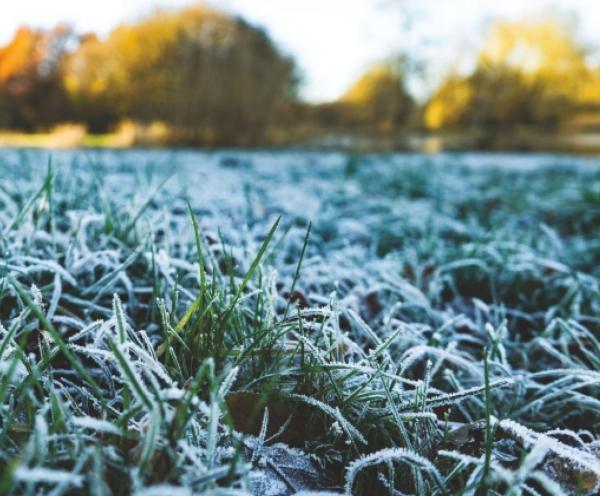Our last frost date is coming up
I write at least six newspaper articles and two magazine articles every month, then there are numerous blog posts, book projects, and so forth. With all that writing it’s sometimes a struggle for me to think up good relevant topics to write about, then at other times, the topic finds me. That’s what happened this week.
Over this past week I have been asked about frost dates six or seven times. I know if that many people asked about a subject there must be many more out there wondering about the same thing, so let’s take a look at frost dates.
First off what are “frost dates?” That is an easy question to answer but is often misunderstood. The “First Fall Frost Date” is the average date each year when we expect to start getting some frost and thus it signals the end of the gardening season in Fall. The “Last Spring Frost Date” is the average date each year when we expect to see the final chance of frost thus it signals the start of the gardening season in Spring.
Knowing the average frost dates for your area is an important tool for any gardener. Whether you are growing in raised beds, vegetables in pots, or have a larger multi-bed vegetable garden, these dates are critical to know for optimum planting times. These dates are important as they signal the start and end of the gardening season.
Paying attention to the local weather and making the proper adjustments can mean the difference between a so-so garden and a great one. Will it rain? How much rain has fallen? How hot or cold will it be? Will there be frost?
The answers to those questions are important and being prepared for the corresponding conditions is even more important, especially when it comes to frost.
In the spring, we need to know the date of the last frost. It often signals when it is safe to begin planting, and for some it means that winter has passed. However, unexpected frosts can be a hassle, and plants that are blooming or annuals that were planted too early need to be covered in order to prevent them from being severely damaged.
In the fall, dealing with frost is a different matter. Unlike spring, once frost begins to form in the fall, it usually signals the end of gardening activity. The growing season is over, and plants are dying and preparing themselves for winter’s cold. Fall frost is referred to as “the first frost,” since that first one signals the end of the growing season and the start of cold weather. In other words, if you haven’t finished all your fall gardening chores by the time the frost rolls around, then it is probably too late! Fall gardening activities such as dividing perennials, planting and digging up bulbs, planting trees and shrubs, planting grass seed, protecting plants from cold, and bringing container plants indoors all need to be done – or timed – in accordance with that first frost in the fall. Now, our in central Texas winters are usually pretty mild so some of those things can still be done then but are best completed in the Fall.
There is a bit more about frost dates that is important, to understand. That is the difference between a “Light Frost,” a “Killing Frost,” a “Hard Frost,” and a “Freeze.”
When late fall arrives, you may start to see frost on the ground when you look out the window in the morning. Depending on how cold it is, you may see some frost before you see a freeze. What’s the difference?
• A frost (ice crystals forming only on surfaces) generally happens when the air temperature is between 36° - 32° Fahrenheit. The soil remains unfrozen.
• A freeze happens when air temperature dips below 32° Fahrenheit. The uppermost level of the soil may be frozen. The colder it gets, the more damage you will see to annual and perennial plants.
• A hard freeze is usually between 28° - 25° Fahrenheit. The ground will also be frozen down to several inches’ depth. Even cold hardy plants will not survive this type of freeze for long.
• A killing freeze is 24° Fahrenheit and below. This freeze, as its name implies, kills just about all plants.
The damage done by any of these degrees of freezing is going to depend on many factors such as the length of the freeze, the location of the plants, were the plants covered, etc. but as a guide this info is helpful to understand.
Now I want to provide some frost dates for you to use as a guide, I cannot tell you exactly when the first or las frost will actually hit, none of us can, so keep in mind that these dates are an average. An average means that some years we will see the first and last frost before these dates and some years we will see them after these dates. In fact, we rarely see the first or last frost hit on these exact dates. That means that the last and first frost dates below are a 30% probability, calculated using 1981-2010 climate normal, and should be a pretty good guide to plan around.
• Dates for Dripping Springs – At an altitude of 1118’ the last frost is March 29th and the first frost is November 9th.
• Dates for Austin – At an altitude of 669’ the last frost is March 1st and the first frost is November 30th.
• Dates for San Marcos- At an altitude of 663’ the last frost is March 11th and the first frost is November 23rd.
• Dates for Wimberley- At an altitude of 610’ the last frost is March 10th and the first frost is November 26th.
As you can see, even areas as close as Austin, Dripping Springs, San Marcos, and Wimberley can have very different frost dates. Use the info provided above to judge the frost dates for your location.
Living in central Texas, you live in a great climate for gardening! You have lots of sun, a good bit of rain, and a long growing season of over 250 days per year. The good news is that it means you can grow just about anything you want. Take advantage of that and get out and enjoy some exercise, sun, and fun as you plant a garden that will bring you pleasure and healthy things to eat nearly all year long!



